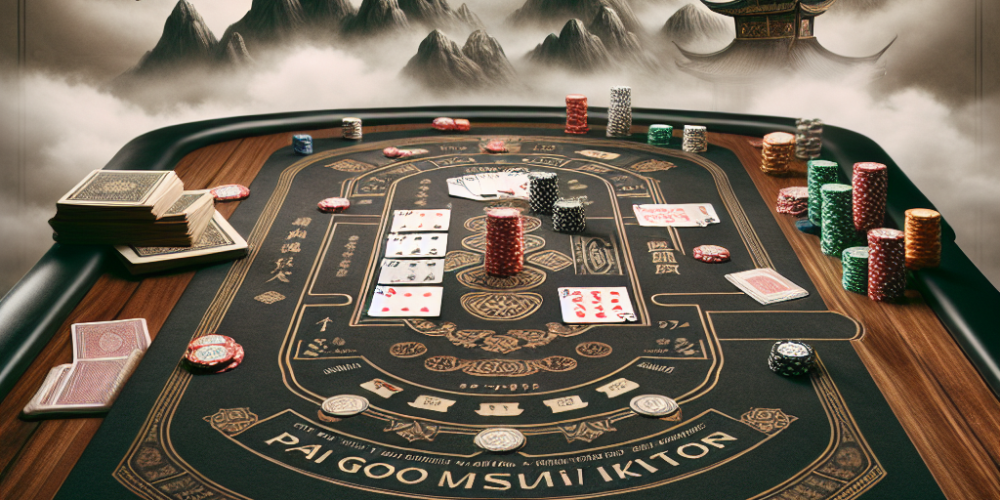Many Pai Gow Poker players overlook the power of setting their hands optimally according to the house way, which could have a significant impact on their game. Pai Gow Poker, a unique blend of traditional poker and the Chinese tile game Pai Gow, requires players to create two poker hands from seven cards. The goal is to beat both the dealer’s high (5-card) and low (2-card) hands. Mastering this split can significantly increase your odds of winning or at least push the game to a draw, conserving your bankroll.
Understanding the Basics of Pai Gow Poker
Before diving into complex strategies, grasp the fundamental rules and structure of Pai Gow Poker. Each player receives seven cards which must be split into a 5-card high hand and a 2-card low hand. The high hand must be of higher poker value than the low hand. The challenge lies in balancing the strength between the two hands to maximize winning potential against the dealer’s corresponding hands.
Key Rule: The Joker
In Pai Gow Poker, the joker acts as a wildcard but with restrictions. It can be used to complete a straight or flush in the high hand; otherwise, it serves as an ace. Strategically, this can dramatically alter your hand’s setup, offering an avenue to strengthen either your high or low hand unexpectedly.
Strategic Hand Setting in Pai Gow Poker
The core of Pai Gow Poker strategy revolves around setting your hands in a way that maximizes your winning odds and mitigates losses.
Balance Your Hands
The common mistake is loading the high hand with power while neglecting the low hand. A robust approach is balancing both hands to enhance the chances of winning both or ensuring at least one strong hand to push the round.
Copying the Dealer’s Method
Casinos often have a prescribed way to set hands, known as the “house way.” Familiarize yourself with these rules, which are available upon request or sometimes posted in the casino. Practicing setting your hands according to these guidelines can help mimic dealer strategies, reducing the house edge.
Bankroll Management in Pai Gow Poker
Pai Gow Poker is known for its slow pace and frequent pushes, which means managing your bankroll is crucial for long-term play.
Set a Budget
Decide on a loss limit and a win goal for each session. Pai Gow is less about big windfalls and more about enjoying a prolonged gaming experience with minimal losses.
Betting Strategies
Consistent betting is key in Pai Gow Poker. Given the high frequency of pushes (ties), using a bet structuring method like the 1-3-2-6 system can leverage winning streaks yet maintain a stable bankroll during inevitable losing rounds.
Increasing Winning Chances
While Pai Gow Poker is a game of chance, certain tactics can marginally tilt the odds in your favor.
Playing as the Banker
Whenever possible, opt to be the banker. Banking allows you to win on ties and potentially improve your payout odds, but remember that you must have enough bankroll to cover all bets on the table.
Watch the Payouts
Some casinos offer lower commission on winnings or might have more favorable house ways. Opt for playing at tables with the lowest commission percentage — typically 5%, but it can vary.
Practical Takeaways for Pai Gow Poker Enthusiasts
1. Always look for opportunities to balance your two hands optimally rather than focusing strength in just one.
2. Learning and mimicking the house way can significantly decrease the house edge.
3. Becoming the banker whenever possible is a powerful way to boost your winning potential.
4. Pay attention to table rules and pick scenarios with the most player-favorable conditions.
By understanding and employing these detailed aspects of Pai Gow Poker, you can transform your approach from novice to savvy player, ensuring every game is played with maximum strategic insight. Whether you’re aiming for consistent play sessions or tailoring your gambling experience for efficiency, these tips will provide a substantial foundation for your gaming activities.

David Harrison stands tall in gambling journalism, marrying his firsthand casino experiences with a deep understanding of betting psychology. His articles transform complex gambling jargon into engaging tales of strategy and chance, making the world of betting accessible and enjoyable. David’s knack for narrative extends beyond print, making him a sought-after speaker on gambling trends and future bets. In the realm of gambling, David is both a scholar and a storyteller, captivating readers and listeners alike.
















